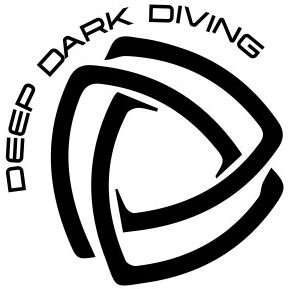Everything you need to know about Technical Diving
Technical diving is becoming popular, and you are curious! We’ll try to answer your questions but do not hesitate to contact us for more details or if you would like to experience a try-dive in tech configuration and knowingly address some of the issues.
Deep Dark Diving offers technical diving courses and technical diving, and we love sharing our passion and experience for tech diving in open water and caves.
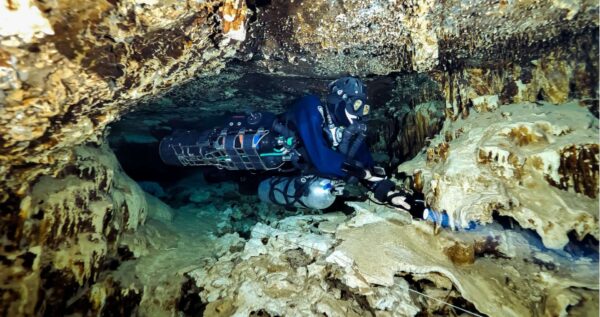
What is technical diving?
The National Oceanic and Atmospheric Administration (NOAA) defines technical diving as “Technical diving is a term used to describe all diving methods that exceed the limits imposed on depth and immersion time for recreational scuba diving. Technical diving often involves using special gas mixtures (other than compressed air) for breathing.”
Technical diving often involves a ceiling preventing a direct ascent to the surface at any dive moment. The ceiling can be real, in a cave or a wreck, or virtual if the diver has a decompression obligation. Mandatory decompression stops appear when the diver exceeds the Non-Decompression Limit (NDL) to avoid decompression sickness.
Technical diving usually requires special equipment, a change in dive configuration with Twinsets or Sidemount for redundancy, special gas mixes to limit narcosis and Nitrogen saturation, and why not rebreathers. Additional training is mandatory to plan and execute these dives and perform the decompression safely stops with optimized off-gassing.
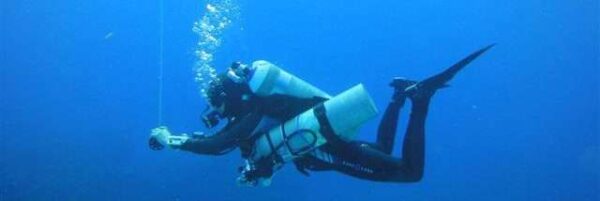
Technical diving configurations
There are three main configurations for technical diving: Side Mount, back mount, and Rebreathers.
Your choice will depend on the environment and the diving you wish to do. Each configuration has advantages and disadvantages.
Sidemount
Single tanks are mounted on the diver’s side in side mount diving. They are clipped on a D-Ring on the waist and maintained by a bungee or shock cord on the shoulder. The diver handles the tanks separately for donning and doffing at the surface.
There is no standard configurations, and you can easily get overwhelmed but all the options. Choose your instructor and equipment wisely, depending on the diving you wish to do. Configurations vary from instructor to instructor and then from diver to diver, but not everything goes. Side Mount is extremely popular among cave divers, and that’s where it originates. You will get the best education in Sidemount from a cave diver, even if you might not see yourself becoming a cave diver. Neither did I when I started diving!

Twinsets or back mount
The back mount diver wears his two tanks on the back. Usually, the tanks are connected by a manifold. The diver can access both tanks using a single regulator when the manifold remains open. Clean chest and no regulator switches, breathing from the long hose (the octopus for the tech diver) are comfortable features, especially deep diving where side mount requires multiple frequent switches. The configuration is very standard. Tech divers have been using the Hogarthian configuration worldwide for a very long time.
Rebreathers – CCR
A Rebreather is a breathing apparatus that recycles exhaled gas, efficiently using the gas carried. It is a great option for deep dives as it may reduce the volume of gas and the number of tanks carried by the diver and optimize the decompression profile. In a rebreather, the exhaled gas passes through a scrubber, removing the Carbon dioxide or CO2 from the breathing loop. The remaining gas is then enriched with Oxygen to compensate for the O2 used by the diver’s metabolism and can be inhaled again.
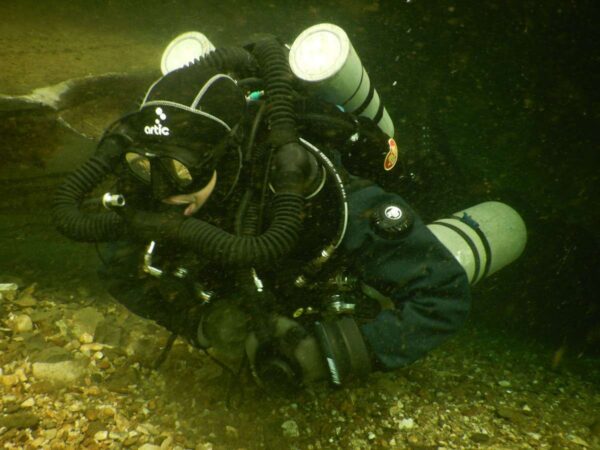
What are the advantages and disadvantages of Side Mount, Back Mount, and rebreathers?
All configurations have advantages and disadvantages. But, of course, personal preferences, availability, and costs must be considered. Often, divers believe and preach that their way is the only way without knowledge and experience in other configurations. I strongly advise asking divers and instructors why they like and recommend the particular configuration they dive rather than deprecating a configuration they do not know.
Sidemount
+ The overall more streamlined and flatter profile enables side mount divers to fit in smaller restrictions, low bedding planes, and reach places inaccessible for back mount divers, which makes it very attractive to wreck and cave divers.
+ In rare and advanced cave diving, the tanks can even be unclipped to make the profile smaller and access smaller places.
+ Sidemount tanks can be carried separately, making accessing remote areas or long paths to access the water easier.
+ In Side Mount, the diver’s body has no rigid constraint, and the freedom of movement of the entire body is very comfortable.
– On the downside, Sidemount can seem more task loading for a new Side mount diver. The configuration requires regular regulator switches to balance the pressure in each tank. These switches are indispensable for safety in an out-of-gas emergency or a catastrophic failure on one side. With time and experience, they become quite natural.
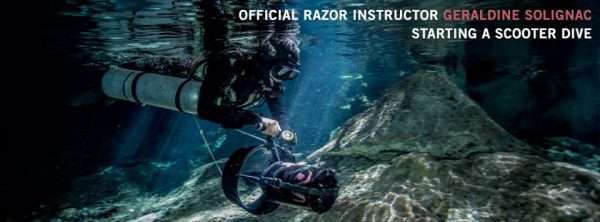
Back mount
+ A Backmount diver in a twinset with a manifold usually only breathes from one regulator, the long hose, and the chest is freer.
+ The configuration is very standard across the world.
– A twinset is quite heavy and can only be carried in one go. A smaller diver or a diver with back pain, knee pain, or joint failure might have difficulty on land.
– A twinset imposes a fairly stiff position on the upper body and the neck.
Each configuration presents advantages and disadvantages that vary depending on the environment and the type of diving. If you have doubts, make sure you consult your instructor.
At Deep Dark Diving, we offer the possibility to do try-dives in side mount and back mount. One full day each, where your tech instructor will explain the configuration and how to adjust our harness in detail. Then you hit the water, practice basic safety exercises, and go for a fun dive. You then have a solid base to decide which one you prefer and what to look at before purchasing your own equipment and orient your training and dive life accordingly.
Rebreather
+ Rebreathers present many attractive advantages. The reduced volume of gas the diver has to carry enables longer and deeper dives, with more efficient decompression. After passing through the scrubber, the gas in the loop is warmer and more humid, making it very comfortable. One more very attractive aspect of rebreather diving is… Silence! And the overall dive experience becomes pure enjoyment!
– Of course, there has to be some downside to rebreather diving, or else we would all be diving rebreathers! First of all, as usual, it requires training and is very challenging. Your first rebreather dive could very well feel like your first-ever dive, except now that you are aware that your buoyancy sucks! Be ready to start all over again.
– Rebreathers are expensive, and diving a rebreather is expensive. Once you purchase your unit, you will need scrubber material, batteries, O2 sensors, and regular service.
– Last but not least, once you have invested your time and money to become a rebreather diver, you might face weight allowance issues when traveling.
Make sure that your dive center supports rebreather divers and can provide you with oxygen fills and scrubber.
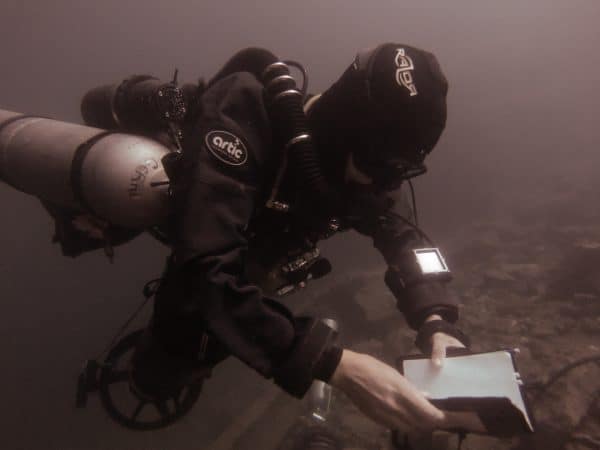
Mixed Gases, Trimix, Heliox
For Deep dives, Tech divers use mixed gases, Trimix or Heliox. In these mixes, an inert gas, Helium, replaces Nitrogen to reduce narcosis and the ongasing of Nitrogen and Oxygen to avoid Oxygen toxicity.
At depth, the mixes contain low Oxygen to avoid toxicity. Then, during the shallower part of the dive, the diver performs the mandatory decompression stops to off-gas Nitrogen faster, decreasing overall time.
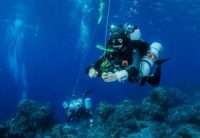
Risks of technical diving
One of the significant risks for a technical diver is decompression sickness. You have heard of it during your entire life as an open-water diver since your very first course. Decompression sickness (DCS) is caused by the formation of bubbles in the body tissues with changes in pressure during the ascent after scuba diving.
Bubbles form in your body after every dive, but until now, you would just get rid of them after returning safely to the surface when your dive is over.
In technical diving, to avoid decompression sickness, you have to perform mandatory stops called decompression stops. There is a lot to know to execute and enjoy a decompression dive safely.
Many questions have to be knowingly answered before executing the dive:
- What depth can you go?
- What gases do you need?
- How much of each gas do you need?
- What can go wrong?
- How can you safely ascent to the surface in an emergency
- Where will you perform the deco stops?
- For how long?
- And many more questions…
No room for improvisation in tech diving!
And, of course, your diver’s skills need to be sharp. Holding buoyancy, trim, and position during a deco stop is crucial, and it is not the same with 3,4 tanks as with your standard back mount single tank.
You will learn to properly plan and execute a decompression dive safely during your training.
Technical diving courses we offer at Deep Dark Diving
At Deep Dark Diving, we share our diving experience in multiple environments and configurations to answer all the questions. We guarantee progressive and rewarding training with as much in-water time as you can safely deal with. Underwater is where we want to spend time with you! Because we love it and want to share it with you.
Here are the courses we offer. Do not hesitate to contact us!
